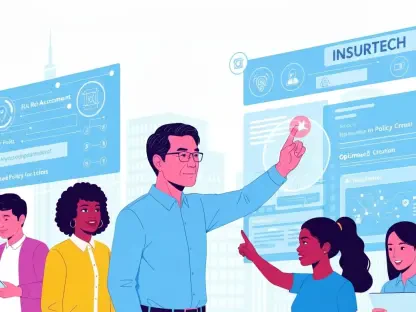I’m thrilled to sit down with Simon Glairy, a renowned expert in insurance and Insurtech, with a deep focus on risk management and AI-driven risk assessment. With years of experience navigating the complexities of broker-insurer relationships, Simon brings a unique perspective on how trust, innovative processes, and collaboration shape the industry. In this conversation, we’ll explore the importance of trust in partnerships, the power of language in fostering collaboration, the dynamics of balancing client-broker-insurer relationships, and the impact of early engagement and tailored risk strategies on achieving better outcomes for all stakeholders.
How do you define trust in the context of relationships between brokers and insurers, and why does it matter so much?
Trust, to me, is the bedrock of any broker-insurer relationship. It’s about knowing that both sides are committed to transparency, honesty, and mutual goals, no matter the market conditions. Trust means we can rely on each other to prioritize the client’s best interests, whether that’s through open communication or delivering on promises. It matters because without it, you’re just transactional—there’s no depth, no long-term stability. In a hard market or a soft one, trust ensures we’re aligned and can weather any storm together.
Why do you think trust remains critical regardless of whether the market is challenging or favorable?
Market conditions are always in flux—hard markets bring tight capacity and rising premiums, while soft markets can breed complacency. Trust is the constant that keeps partnerships steady through those swings. When trust exists, you’re not just reacting to the market; you’re proactively problem-solving together. It prevents friction, ensures consistency, and keeps everyone focused on long-term value rather than short-term gains. Without it, relationships crumble under pressure or drift apart when times are easy.
Can you share a story of a time when trust played a pivotal role in a partnership with an insurer?
Absolutely. A few years back, I worked with an insurer on a complex client case during a hardening market. Capacity was shrinking, and the client’s needs were highly specialized. Because we’d built a foundation of trust over years of transparent dealings, the insurer was willing to go the extra mile—customizing coverage and even taking on more risk than they typically would. That trust turned a potential dead-end into a win for the client, and it deepened our partnership for future collaborations.
I’ve noticed some organizations use specific language, like calling insurers ‘partners’ instead of traditional terms like ‘carriers.’ What’s the reasoning behind this choice?
That language shift is intentional and powerful. Calling insurers ‘partners’ reframes the relationship as a true collaboration, not just a transactional exchange. It signals that we see them as equals in serving the client, not just a vendor or a marketplace. It’s a cultural cue that fosters respect and shared purpose, reminding everyone on our team that we’re in this together, working toward the same outcomes.
How does using this kind of terminology shape the way your team interacts with insurers?
It changes the mindset completely. When we refer to insurers as partners, it encourages our team to approach every interaction with a collaborative spirit. It’s not about haggling or pushing for the lowest price; it’s about finding solutions together. That language sets a tone of mutual respect, which often leads to more open dialogue, quicker problem-solving, and a stronger commitment to each other’s success.
Can you walk us through the analogy of the three-legged stool in broker-insurer-client relationships?
Sure, I often describe this dynamic as a three-legged stool, where the client, broker, and insurer are the legs. For the stool to stand firm, all three legs need to be equally strong and balanced. The client brings their needs and goals, the broker provides expertise and advocacy, and the insurer offers the solutions and stability. When everyone communicates and collaborates effectively, the relationship holds up under any pressure. It’s a perfect visual for how interconnected and interdependent we are.
What happens when one of those legs isn’t pulling its weight?
When one leg is weaker, the whole stool gets wobbly—or worse, collapses. For instance, if the insurer isn’t responsive or lacks capacity, it puts strain on the broker to find alternatives and can erode the client’s confidence. If the client isn’t transparent about their risks, it hampers our ability to secure the right coverage. And if the broker isn’t proactive, gaps form in strategy and execution. That imbalance creates friction, delays, and sometimes even failed outcomes. It’s a reminder that we all have to show up fully.
What does being a trusted advisor mean to you in your everyday work with clients?
Being a trusted advisor is about going beyond just placing policies—it’s about truly understanding a client’s business, their challenges, and their aspirations. In my daily work, it means listening deeply, asking the right questions, and offering insights that they might not have considered. It’s about guiding them with real-time recommendations and educating them on how to think more strategically about risk. Ultimately, it’s earning their confidence so they see me as a partner in their success, not just a service provider.
How do you encourage clients to think more creatively about their insurance needs?
I start by challenging the status quo. Many clients come with a narrow view of insurance as a checkbox item, so I push them to think holistically—looking at emerging risks like cyber or climate impacts that they might not have on their radar. I use data and scenarios to paint a fuller picture of their exposures and then brainstorm alternative solutions, like layering coverage or exploring non-traditional products. It’s about shifting their mindset from reactive to proactive, so they’re prepared for what’s around the corner.
Can you explain what a Risk Map process entails and how it benefits clients?
The Risk Map process is a tailored, deep-dive approach to understanding a client’s entire risk landscape. It involves comprehensive due diligence—examining their business plans, risk infrastructure, contracts, current coverage, costs, and program administration. We essentially swarm the account with expertise, mapping out every potential exposure and opportunity. The benefit for clients is a customized strategy that aligns perfectly with their unique needs, rather than a one-size-fits-all solution. It’s about clarity and precision in managing their risks.
Why is starting engagement with clients so early in the process a game-changer?
Early engagement sets the tone for everything. By getting involved well before renewal or placement deadlines, we have the time to truly understand the client’s business and build a strategy that’s proactive, not rushed. It allows us to identify gaps or emerging risks before they become problems and to collaborate with insurers on tailored solutions. That head start often means we can avoid the chaos of last-minute market bidding and secure better terms for the client. It’s all about being strategic rather than reactive.
How do stronger submissions and early collaboration impact the insurers you work with?
Stronger submissions are a win-win for insurers. When we come to them with thorough, well-prepared proposals—thanks to early engagement and detailed risk mapping—they don’t have to waste time deciphering incomplete data or spinning their wheels on unviable risks. It streamlines their underwriting process, reduces inefficiencies, and often leads to better financial outcomes for them, like improved hit ratios and retention rates. Plus, it builds their confidence in us as brokers who bring quality business to the table.
What’s your forecast for the future of broker-insurer partnerships in an era of evolving risks and technology?
I see broker-insurer partnerships becoming even more collaborative and tech-driven in the coming years. With risks like cyber threats and climate change growing in complexity, we’ll need to lean heavily on data analytics and AI to predict and mitigate exposures. I expect partnerships to evolve into ecosystems where brokers and insurers share real-time data through digital platforms, enabling faster, smarter decision-making. Trust will remain the glue, but technology will be the accelerator, helping us innovate and adapt to whatever challenges come next.









